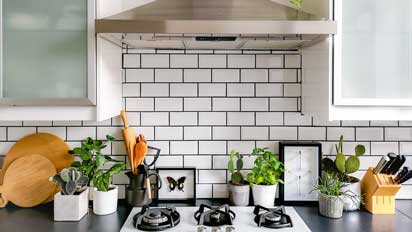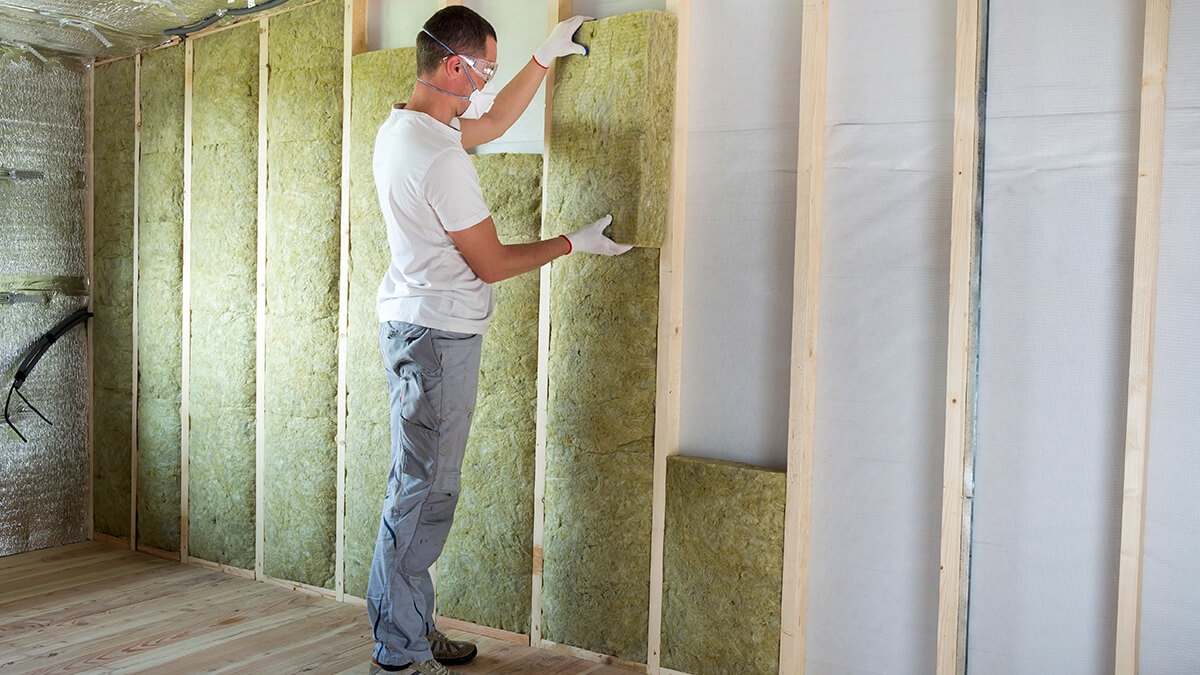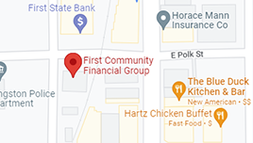First Community Financial Group, Inc. Blog |
|
Whether you bought a new or used mobile home, odds are that when you purchased it the design wasn't exactly what you wanted. Builders may not use the most high-end materials on new builds, and if it's an older model, it may be time for an update. If you ever plan to revamp a room in your mobile home, consider starting with the kitchen. It can make your mobile home look more modern, and they can have some of the best return-on-investment rates.*
If you're not sure where to start in your kitchen or if you're looking for inspiration, you're in the right place. Foremost® has done some research for you and put together a list of ideas you can use to give your kitchen a more updated look!
We hope some of these suggestions fit into your budget and give you the motivation to get started. Good luck on your DIY journey!
0 Comments
 Every time I'm in my house and hear the rain start to pound on my roof, the only thing that goes through my mind is…gutters. Were you expecting me to say, lush greenery or a beautiful rainbow? The fact is, my home doesn't have rain gutters and it needs them, badly. My husband built our house about five years ago and though he did a beautiful job creating our roof which has a pitch of 12x12, he forgot to add the one thing that would stop the water from drowning my flowerbeds to the point of no return, damaging our walkway made of cement and eroding the soil around our foundation. Of course, gutters are not necessary for every house, but most houses need some kind of rain guttering system. If you notice the erosion of soil around your foundation, cement breaking up or dirt splattered on your siding, don't wait like we have, your house is telling you it needs gutters to stay healthy. Gutters are not necessary for every house, but most houses need some kind of rain guttering system. Buying gutters is an important aspect in taking care of your home and should be considered. They are most often installed by professionals, but there's no reason you can't make it a do-it-yourself (DIY) job. This Old House has some great DIY videos on how to install rain gutters. (I think I might accidently leave a couple of these playing on our home computer for my husband). There are also countless professionals that install gutters on a daily basis and can tell you what kind is right for your home. If you are still questioning why your home needs gutters, here's a list of what these rain catching devices will do:
Source: www.foremost.com
Whether you own a site-built home, mobile home, RV or small business, it's always a good idea to create a Personal Property Inventory. Photos, etc. of big-ticket items can be very helpful in the event of a claim!  There's nothing quite like a warm, crackling fire in the fireplace to up the cozy factor during the holiday season, and all winter long. If you're asking yourself “Are fireplaces safe?” you've come to the right place. There are things you can do to minimize the dangers, and we're going to walk you through them to educate you about fire safety. Click here to read more about fireplace safety: Fireplace Safety Tips | Foremost Insurance Group Is your hard-working kitchen getting cluttered and unmanageable? If you need more storage, but every cupboard, shelf, nook and cranny is filled, it's time to take a second look at your use of space. Chances are you can reorganize and reclaim more storage than you ever thought possible.
Well-planned cabinets, drawers and shelves maximize space, save steps and eliminate frustrating searches for necessary kitchen tools and gadgets. An organized kitchen doesn't cost a lot of money, but does require a practical plan to keep items handy and easy to reach. Here are a few ideas to help make efficient use of your kitchen space and create some new storage areas as well. Clear the Clutter Your kitchen holds an awesome amount of stuff. The more stuff you collect and store in the kitchen, the more you have to manage. It makes sense to get rid of anything you don't need or want anymore. Reducing clutter is a must. If you do nothing else to organize your kitchen, do this. A well-designed, folding step stool is an indispensable tool for your reorganizing strategy. Choose one that helps you access storage space without requiring much of its own. Be sure it's sturdy and can easily hold your weight while you're stretching and reaching into upper cabinets, shelves and closets. Pick a starting point and begin at the top. Work one shelf, cupboard or drawer at a time and remove everything you find. Most items you run across will require a decision, so group your “stuff” into categories. For each item, ask yourself:
Remember these tips:
To make the most of potential kitchen storage, think beyond the individual cabinets, shelves and closets to every available inch. A careful inventory of existing space can help you plan how to use it effectively. Start your planning process by searching for unused or underused spaces. Examine all surfaces, including the area above or below appliances, behind doors and unused floor space. Grab a notebook and pen and make a list of any potential storage spots or areas that can be better organized.
Now that you've cleared out the clutter and discovered a few new storage areas, it's time to take your final step toward creating an efficient, well-organized kitchen. Think of your kitchen as a single room with three separate work centers: preparation, cooking and cleanup. Keep in mind where, what and how you use an item before you put it back into each cabinet or drawer. Easy access and return is important. If you can get to something and return it to its designated space without a hassle, the chance of your kitchen staying organized is greater. Here are a few ideas to get you started:
How to Arrange a Food Pantry When your pantry or food storage cabinets become packed with food that isn't sorted or organized, you will eventually have a huge mess on your hands. The pileup of ingredients can be avoided without spending a lot of time or effort. It just takes about an hour from start to finish. Start by emptying pantry shelves and moving everything to boxes or a nearby countertop. Clean shelves with warm, soapy water and wipe dry. Before you put things away, think about how you will fill prime and non-prime spaces. For example, prime, eye-level shelves should be reserved for your items used most often.
Kitchen Storage and Organizing Resources
Insulation plays a leading role in keeping a house cool during hot seasons and warm during cold seasons. This protection from radiant heat and cold drafts helps you to save energy and money in the long run.
If you are interested in insulating your house, here are some useful tips from The Family Handyman that will help make your DIY project a success. You can check out a full article on mastering the art of installing home insulation below from Foremost ( Farmers) Insurance. Tips on installing home installation | Foremost Insurance Group Moles don't come above ground often. But when they do, they make their presence known. Unfortunately, the renovations they make aren't always the most desirable.
Click on this link to read more about how to rid your yard of these pesky varmints: A Guide on Getting Rid of Moles | Foremost Insurance Group |
Contact Us(936) 327-4364 Archives
March 2024
Categories
All
|







 RSS Feed
RSS Feed
